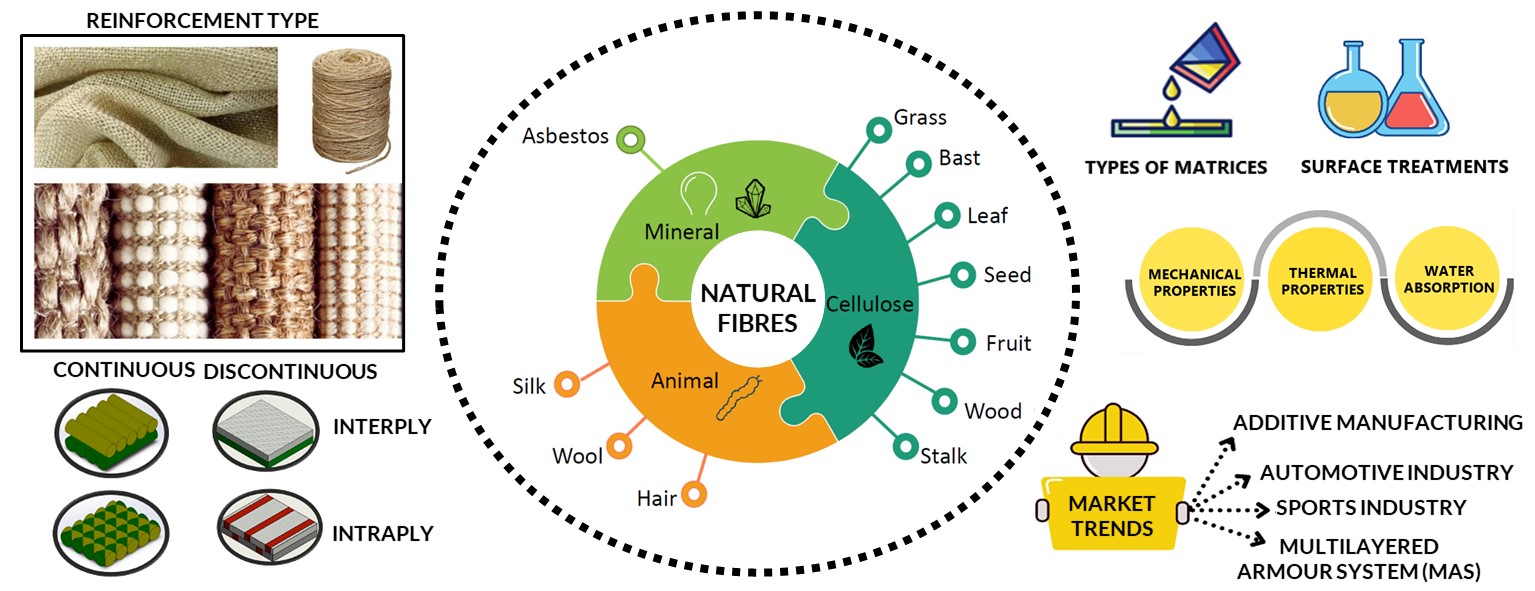 Open Access
Open Access
REVIEW
A Review of Recent Advances in Hybrid Natural Fiber Reinforced Polymer Composites
Federal Centre of Technological Education in Rio de Janeiro (CEFET/RJ), Rio de Janeiro, Brazil
* Corresponding Author: Mariana Doina Banea. Email:
Journal of Renewable Materials 2022, 10(3), 561-589. https://doi.org/10.32604/jrm.2022.017434
Received 10 May 2021; Accepted 23 June 2021; Issue published 28 September 2021
Abstract
Natural fiber reinforced polymer composites (NFRCs) have demonstrated great potential for many different applications in various industries due to their advantages compared to synthetic fiber-reinforced composites, such as low environmental impact and low cost. However, one of the drawbacks is that the NFRCs present relatively low mechanical properties and the absorption of humidity due to the hydrophilic characteristic of the natural fibre. One method to increase their performance is hybridization. Therefore, understanding the properties and potential of using multiple reinforcement’s materials to develop hybrid composites is of great interest. This paper provides an overview of the recent advances in hybrid natural fiber reinforced polymer composites. First, the main factors that affect the performance of hybrid fiber-reinforced composites were briefly discussed. The effect of hybridization on the mechanical and thermal properties of hybrid composites reinforced with several types of natural fibers (i.e., sisal, jute, curauá, ramie, banana, etc.) or natural fibers combined with synthetic fibers is presented. Finally, the water absorption behaviour of hybrid fiber-reinforced composites is also discussed. It was concluded that the main challenges that need to be addressed in order to increase the use of natural-natural or natural-synthetic hybrid composites in industry are the poor adhesion between natural fibers and matrix, thermal stability and moisture absorption of natural fibers. Some of these challenges were addressed by recent development in fibers treatment and modification, and product innovation (hybridization).Graphic Abstract

Keywords
Cite This Article
Citations
 Copyright © 2022 The Author(s). Published by Tech Science Press.
Copyright © 2022 The Author(s). Published by Tech Science Press.This work is licensed under a Creative Commons Attribution 4.0 International License , which permits unrestricted use, distribution, and reproduction in any medium, provided the original work is properly cited.


 Submit a Paper
Submit a Paper Propose a Special lssue
Propose a Special lssue View Full Text
View Full Text Download PDF
Download PDF

 Downloads
Downloads
 Citation Tools
Citation Tools